Freedom Road
Angelina McLeod
2019
| 5 short Films
Selections and Awards
A Documentary Series from Shoal Lake 40
Freedom Road is a five-part documentary series that tells the inspiring story of Shoal Lake 40 Anishinaabe First Nation and their battle to build a road, after their community was forcibly relocated and cut off from the mainland over 100 years ago, so that water could be diverted to the city of Winnipeg. Director and Shoal Lake 40 member Angelina McLeod uses an innovative, community-driven approach to storytelling that highlights the community’s dignity, strength and perseverance, as they take back control of their narrative and their future in the process of building Freedom Road.
Freedom Road is a five-part documentary series that tells the inspiring story of one First Nation’s battle to resolve a brutal colonial legacy that uprooted and transformed a self-sustaining community into an isolated island, only a short distance from the Trans-Canada highway.
For more than a hundred years, the water of Shoal Lake 40 Anishinaabe First Nation has flowed to Winnipeg via a 150-kilometre aqueduct. The city planners’ decision to divert this water supply forced the First Nations community to relocate, leaving them isolated, with no road access and a treacherous journey by barge or over ice to obtain basic services and supplies.
Meanwhile, the community’s current water supply is undrinkable, subject to a 22-year-long boil water advisory, and their access to water costly and unreliable—a travesty given that they are surrounded by what was once clear, fresh water that had been stewarded for thousands of years.
Freedom Road details the perilous daily conditions that have become a way of life for Shoal Lake 40 residents, and the multi-generational effort to build a road that would reconnect them to the world. Directed by community member Angelina McLeod, the series uses an innovative point-of-view approach modelled after the community’s governance circles of men, women, youth and Elders, each offering their intimate perspectives on life before and after Freedom Road. This community-driven approach captures the dignity, strength and perseverance of the Anishinaabe people of Shoal Lake 40, who, after having their story told by outside media for decades, have taken it back—and taken back their future for the generations to come.
1) FREEDOM ROAD: CONTEXT (Synopsis)
This story begins over a century ago, when the City of Winnipeg decides that the water surrounding the traditional Anishinaabe territory of what is now Shoal Lake 40 First Nation will be diverted and used as Winnipeg’s primary water source. The community, their ancient burial grounds, environment, and ways of life are forever disrupted, and access to opportunities and essential services are severed. Enforced residential schooling and a tainted water supply compound the devastating impact. Community leader and former combat engineer Daryl Redsky sheds light on how generations of complex planning, cultural preservation and mobilization have led us to the current moment—and to the construction of Freedom Road.
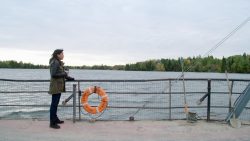
2) FREEDOM ROAD: MEN / ININIWAG (Synopsis)
The men of Shoal Lake 40 tell the story of life in the community from their perspective, in the lead-up to their annual powwow. Lorne Redsky works the outdated pump house; there is no money to fix basic systems and bottled water is required for everyday use. As Lorne focuses his energy on the monumental task of getting clean water to the powwow, community member Kavin Redsky prepares his regalia for dancing, a deeply personal process connected to his healing journey. The two men embody the powerful gifts of community, traditional culture, and medicines, which have given the people of Shoal Lake 40 the resilience to continue the fight for Freedom Road.
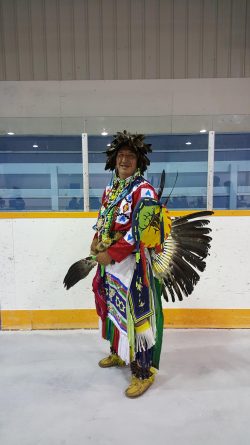
3) FREEDOM ROAD: WOMEN / IKWEWAG (Synopsis)
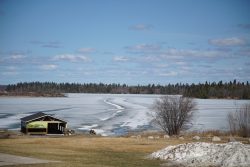
Photo credit: Alicia Smith
Shoal Lake 40 women talk about their struggles, and those of their parents and grandparents, in trying to raise their families in a hazardous state of enforced isolation. Everyone in the community has a harrowing story of a loved one falling through the ice while trying to get across the lake, with pregnant women and new mothers fearing for their babies and having no choice but to make the trek in dangerous conditions. The film shows the key role of the community’s women in demanding funding for the road from three levels of government, and how their reconnection to culture and ceremony give them the strength to keep going.
4) FREEDOM ROAD: YOUTH / OSHKAADIZIIG (Synopsis)
Shoal Lake 40 youth share what it’s like to be forced to live away from their close-knit families and community to attend high school in Kenora, Ontario. The community’s school provides courses up to the Grade 8 level only, so there are no other options for young people who want to continue their education. Some of the young men are able to work on the construction of the road, a rare opportunity to have a good job in the community. The pride of the youth in doing this work is palpable, and they express the gratification that comes with providing safety for their Elders and opportunities for future generations. Despite the systemic and personal racism they’ve already experienced, Freedom Road gives the youth a sense of optimism and instills hope in them for the future of their community and their own ability to contribute.
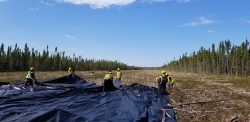
Photo credit: Alicia Smith
5) FREEDOM ROAD: ELDERS / GITCHI-AYA' AAG (Synopsis)
The Elders of Shoal Lake 40 prepare a feast as part of their annual Fall Harvest, where they share traditional knowledge and teachings with the people of the community. As they prepare bannock, fish and meat, they plaintively recount traumatic experiences from their childhoods, including being hidden from residential school and remembering those who lost or risked their lives trying to cross the ice. When the Elders talk about their responsibility in caring for community members and passing their knowledge on to the next generation, they illuminate the powerful source of the community’s continued endurance and strength.

Still from Film
Q&A with Angelina McLeod
1) Tell us about yourself and where you come from.
I was born and raised in Shoal Lake 40, Ontario, a small Anishinaabeg community between the border of Ontario and Manitoba. My family was very cultural and traditional; my parents would hunt and fish and gather berries, wild rice and traditional medicines. They knew how to live off the land and took part in and conducted Midewiwin ceremonies, and would take me with them. This helped me gain a better understanding of the importance of reviving Anishinaabe culture, language, ceremony and traditional ways of life.
I’m a parent of four kids, two boys and two girls, and soon to be a grandmother (kookum). I’m a Native Studies master’s student at the University of Manitoba and an Teaching Assistant for the Native Studies Department. I’m a land and water defender and I fight for the rights of Indigenous people through all the work that I do: as a filmmaker, public speaker, writer, documentary subject and artist.
2) What was it like growing up in Shoal Lake 40?
Growing up in Shoal Lake 40 was a struggle. I grew up with no running water, in a small two-bedroom house with my four siblings and my parents. We had an outhouse and used a metal tub to have our baths. In the summer, we would just wash up on the dock down the hill by my house by the lake.
It was nice growing up when I was a younger child, going out swimming in the lake to our favourite family beach spots. It was fun growing up with all my friends; we used to go swimming almost every day in the summer, play games, and go biking. In the winter I loved skating, snowmobiling and downhill sliding with my friends. Those were the most memorable and best times of my life. Crossing the ice during ice break-up and freeze-up was always scary. I fell through the ice once but managed to get myself up and out safely. But one of the hardest things was having to leave home for high school; there is no high school in SL40. I had to leave to attend Grade 9 and go to a boarding home in Kenora, Ontario. To live with strangers, I had to get used to living in a colonialized world that was full of racism and those who didn’t have a full understanding of what it was like to live as an Indigenous person in this country. I also lost my sister when she moved to Kenora for high school and lived in a boarding home. She went missing and was later found deceased. I still don’t know what happened to her; I probably never will.
3) What led you to make this series?
I heard the NFB was looking for someone who lived in Winnipeg to work as a liaison for a film series that was about to start production. After a coffee with producer Alicia Smith, we discussed my film experience. Next thing you know, I’m working on directing the Freedom Road short film series.
4) Freedom Road used a community-engaged filmmaking process. What did that mean in terms of the way you worked to develop and create the series?
For the Freedom Road series, I used Indigenous research methodologies and ensured there was respect for community members and that cultural protocols were met. I was fully engaged in finding out what was happening in the community during the film process; by doing this I was also able to reconnect with my family and friends. The community trusted me, so I made sure that this trust and mutual respect was kept. I used my own struggles with my family and what I had witnessed growing up to create the series and show what needed to be seen to the world.
5) What did you learn during the making of the series?
I learned that the community was really caring and connected with each other and each other’s families. That we all endured hardships, and this was a good way of sharing our stories, and a way to heal and move forward.
6) What do you most want people to feel or understand from hearing the story of Shoal Lake 40?
[I want people] to understand the hardships of all Indigenous communities across Turtle Island. In terms of SL40, I want people to acknowledge the hardships endured by the Indigenous community at the other end of the pipe. Winnipeggers benefit by drinking clean water, while SL40 members still live with a 22-year-long boil water advisory, and are forced to use jugs of water and ration their bottled water.
7) What’s been happening in the community since filming wrapped?
I heard they will be building a new school, and engineers are working on the plans for a water and sewage treatment plant. I also hear they will be opening a museum.
CLIPS
Promotional Materials
Images
Loading...
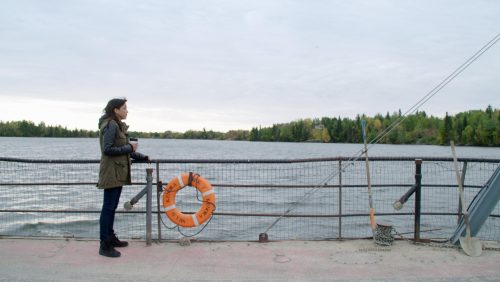
Download
Loading...

Download
Loading...

Download
Loading...
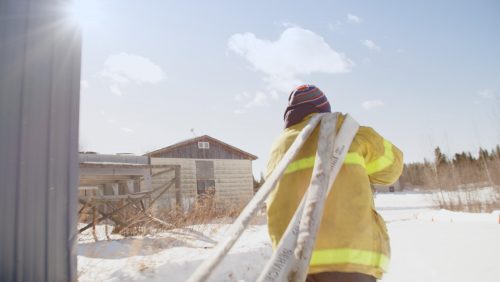
Download
Loading...
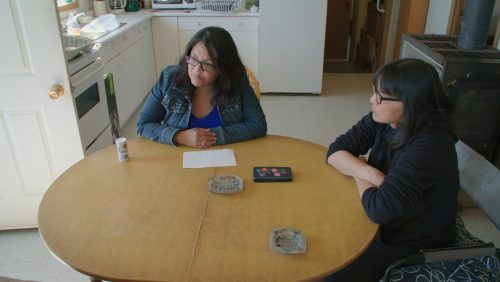
Download
Loading...
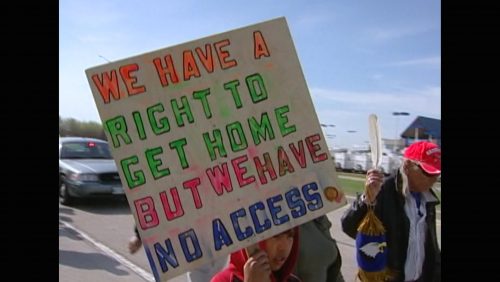
Download
Loading...
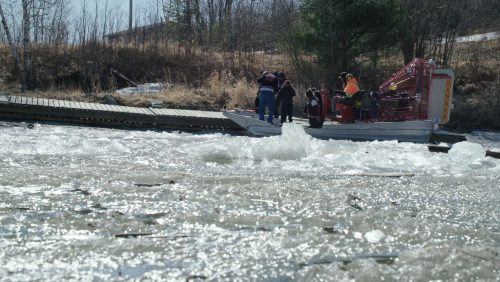
Download
Loading...
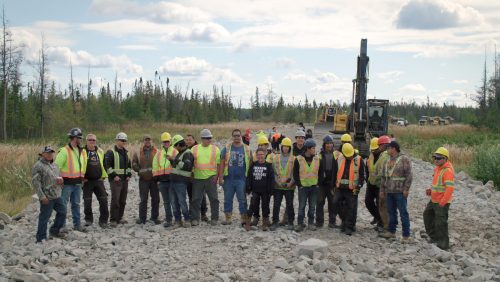
Download
Loading...

Download
Loading...
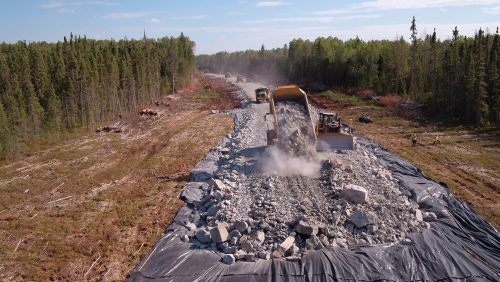
Download
Loading...
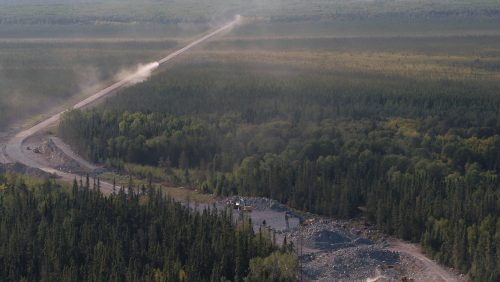
Download
Loading...
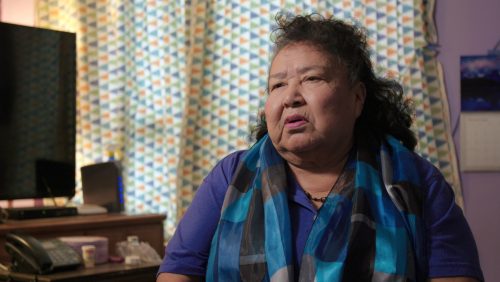
Download
Loading...
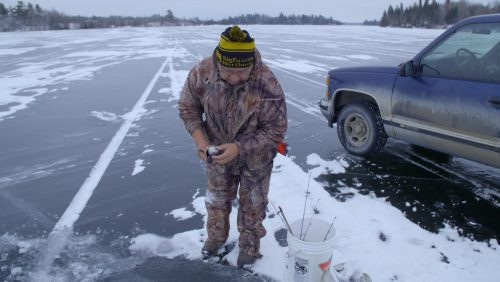
Download
Historical Timeline: Freedom Road
1873: Treaty Three is signed between Annishinaabeg First Nations, including Shoal Lake 40, and Canada at the Northwest Angle.
1874: Winnipeg is incorporated as a city.
1875: Reserve lands laid out in Shoal Lake.
1880: Winnipeg’s municipal government gives a 20-year license to Winnipeg Water Works, a private company, to supply the city with drinking water.
1899: Winnipeg’s municipal government ends its relationship with Winnipeg Water Works.
1900: Winnipeg begins to use artesian wells to supply the city with water.
1901–1902: Cecilia Jeffrey residential school, just east of the Shoal Lake 40 reserve, is opened by the Women’s Foreign Missionary Society of the Presbyterian Church.
1904–1905: Winnipeg reports 1,276 cases of typhoid, in a city with a population of 67,300.
1906: Manitoba establishes a Water Supply Commission mandated to find a new water supply for Winnipeg.
1906: The Greater Winnipeg Water District (GWWD) is formed, comprising Winnipeg and the suburban and rural municipalities of St. Boniface, Transcona, St. Vital, and part of Fort Garry, Assiniboia, and Kildonan.
1911: The 1876 Indian Act is revised to make it easier for governments to appropriate reserve lands in the interests of public works.
1913: Thomas Russ Deacon is elected mayor of Winnipeg on a “Shoal Lake Water” platform.
1913: Shoal Lake 40’s population is reported as 83, with residents living in “well built” log houses.
1913: The GWWD begins preliminary work building an aqueduct on the Shoal Lake 40 reserve.
1913: The federal government and Ontario approve the GWWD’s application to divert water from Shoal Lake to Winnipeg.
1914: The Department of Indian Affairs conducts a “Surrender” process, which results in Shoal Lake 40 losing its rights to gravel and sand on the reserve.
1914: Canada uses “Section 46” of the Indian Act to unilaterally sell approximately 3,000 acres of Shoal Lake 40’s reserve lands to the GWWD for the price of $1,500, so that the GWWD can build the intake and do associated engineering works for the aqueduct.
1914: The International Joint Commission, established in 1909 to manage waters shared by Canada and the United States, approves Winnipeg’s application to divert Shoal Lake water to Winnipeg for “sanitary and domestic” purposes.
1914: The GWWD begins building the Shoal Lake Aqueduct, including an earth-filled dyke and a canal that effectively cut the Shoal Lake 40 reserve into three parts and relocate much of the community to one part of it.
1918: Twenty-two work camps of men are working to build the aqueduct.
1918: Shoal Lake 40 Chief Pete Redsky writes and protests the loss of reserve land.
1919: Another “Surrender” process transfers more of Shoal Lake 40’s reserve land to the Greater Winnipeg Water District.
1919: Shoal Lake water flows in Winnipeg taps.
1929: Cecilia Jeffrey school moves from Shoal Lake to near Kenora, Ontario.
1932: First section of the TransCanada highway between Winnipeg and Thunder Bay opens.
1937: Shoal Lake 40 Chief Pete Redsky inquires about Shoal Lake 40’s land loss and payment.
1977: Regular passenger service on the GWWD railroad from Shoal Lake to Winnipeg ends.
1983: Shoal Lake 40’s commercial and recreational walleye fishery is closed by the province of Ontario with the agreement of Manitoba.
1983: Excursion service from Winnipeg to Shoal Lake on GWWD railroad ends.
1989: Shoal Lake 40, the city of Winnipeg, and the province of Manitoba enter into the Shoal Lake Tripartite Agreement.
1990: City of Winnipeg blocks Shoal Lake 40’s proposals for cottage-lot development.
1997: Cryptosporidium is found in Shoal Lake 40’s drinking water and the community is put under a boil-water advisory.
2007: Shoal Lake 40 First Nation members walk to Winnipeg in three days (a distance of 137 kilometres) and demand a “Freedom Road.”
2013: Shoal Lake 40 holds a strategic planning meeting to decide how to best advocate road access to the community.
2014: Federal government refuses to commit to funding a share of Freedom Road, linking Shoal Lake 40 to the TransCanada highway.
2014: Shoal Lake 40 opens their own Museum for Canadian Human Rights Violations outside of Winnipeg’s Canadian Museum for Human Rights. The MCHRV later relocates to the Shoal Lake 40 reserve.
2015: Thousands of Winnipeggers walk in support of Shoal Lake 40’s demands for road access and clean drinking water.
2015: Churches for Freedom Road formed.
2015: Canada, Manitoba and Winnipeg reaffirm their commitment to funding an all-weather road to connect Shoal Lake 40 to the mainland.
2018: Freedom Road reaches the TransCanada highway.
2019: Freedom Road opens, connecting Shoal Lake 40 to the TransCanada highway and ending a century of manufactured isolation.
Historical Overview: Shoal Lake 40 First Nation, Water and Winnipeg
The Annishinaabeg or Ojibway community of Shoal Lake 40 (Kekekoziibii) First Nation has its historic homelands in the western part of the Lake of the Woods watershed, on what is now the Ontario-Manitoba border. This was a well-resourced and connected part of the world, and its inhabitants relied on fish, manoomin or wild rice, agriculture, and hunting.
In the late 1700s, European fur traders began to arrive in the region. A century later, Annishinaabeg leaders and Canada would negotiate Treaty Three, completed in 1873. Reserve lands, including those of Shoal Lake 40, were laid out after that. A residential school operated by the Presbyterian Church opened near the Shoal Lake 40 reserve in the first few years of the 20th century.
The city of Winnipeg grew dramatically in the early 20th century. Population growth stressed what had always been an inadequate water supply. In 1913, Winnipeg elected a mayor who was committed to solving the city’s water problem by building an aqueduct to convey water from Shoal Lake to Winnipeg.
Shoal Lake 40’s reserve lands were critical to Winnipeg’s plans to build an aqueduct. Winnipeg began work on the aqueduct in 1913, and soon Shoal Lake 40 began to lose rights to an important part of their reserve lands and resources. Early in 1914, the First Nation lost the right to gravel and sand on the reserve. Later in the same year, the federal government invoked section 46 of the Indian Act, which allowed it to take reserve lands deemed necessary for “public works.” Shoal Lake 40 lost more than 3,000 acres of land for the aqueduct’s intake and associated engineering works. The construction of a dyke and canal designed to separate “dark” water from what flowed to the city effectively cut the reserve into three pieces, and the community itself relocated to one part of it.
Shoal Lake water ran in Winnipeg taps in 1919. For the next century, the city would grow on the basis of an ample, safe, and relatively cheap water supply, and celebrate the genius and efficacy of the aqueduct that delivered it.
Things were very different at Shoal Lake 40. In the 1980s, they lost their commercial walleye fishery, and the city of Winnipeg successfully blocked their efforts to develop cottage lots. The Tripartite Agreement entered into by Shoal Lake 40 First Nation, the city of Winnipeg, and the province of Manitoba in 1989 produced few tangible results for the First Nation.
In 1997, Shoal Lake 40 was put under a boil-water advisory, which remains in place some 22 years later. Without road access, it was difficult to build and harder to maintain a local water-treatment plant. In the winter, Shoal Lake 40 members walked or drove on the ice. In the summer, Shoal Lake 40 used a costly and unreliable barge, the Amik II. During spring break-up and fall freeze-up, the community made arduous and often dangerous trips on thin ice or across tricky water.
Shoal Lake 40’s leaders had long argued that a road connecting the community to the west was critical to addressing the structural problems that limited their opportunities and imperiled their health. In 2007, much of the community walked the almost 150 kilometres from Shoal Lake 40 to Winnipeg and demanded a road linking the community to the TransCanada highway.
In 2014, Shoal Lake 40 began a campaign to raise public awareness about the particular challenges facing their community. They opened a Museum for Canadian Rights Violations and welcomed hundreds of visitors to learn about the community and its predicaments. In the city of Winnipeg, non-Indigenous and Indigenous residents worked to support Shoal Lake 40’s claims, joining in the “Water Walk” of 2015, working with Churches for Freedom Road, attending events organized by the Friends of Shoal Lake 40, or listening to Chief Erwin Redsky speak.
In 2015, the province of Manitoba, the municipality of Winnipeg, and the Canadian federal government agreed to fund Freedom Road. The 24-kilometre gravel road was completed in June of 2019, ending one hundred years of human-made isolation for Shoal Lake 40. A water-treatment plant is scheduled to be operational by early 2021.
Over the span of a full century, Shoal Lake 40 has endured and overcome a particularly intense and revealing experience of Canadian colonialism. Their story tells us a great deal about Indigenous people and modern Canada. The story of Shoal Lake 40 and Freedom Road shows us that Canada has resourced settler communities at the expense of Indigenous ones, and reveals how Indigenous people have creatively and persistently resisted, and continue to do so.
Team
Angelina McLeod
Filmmaker
Photo
Photo : Greg Gallinger
Alicia Smith
Producer
Photo
David Christensen
Executive Producer (NFB)
Photo
Photo : NFB
Credits
Written and Directed by
Angelina McLeod
Producer
Alicia Smith
Executive Producer
David Christensen
Picture Editor
Erika MacPherson
Director of Photography
Tyler Funk
Sound Design
Anita Lubosch
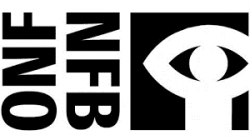
Media Relations
-
About the NFB
The NFB is Canada’s public producer and distributor of award-winning documentaries, auteur animation, interactive stories, and participatory experiences. Since 1968, the NFB has produced over 300 works by First Nations, Métis and Inuit filmmakers—an unparalleled collection that pushes past dominant narratives and provides Indigenous perspectives to Canadian and global audiences. The NFB is implementing an action plan with commitments that include devoting a minimum of 15 percent of overall production spending to Indigenous-led productions and making these works more accessible via Indigenous Cinema, a destination on NFB.ca.